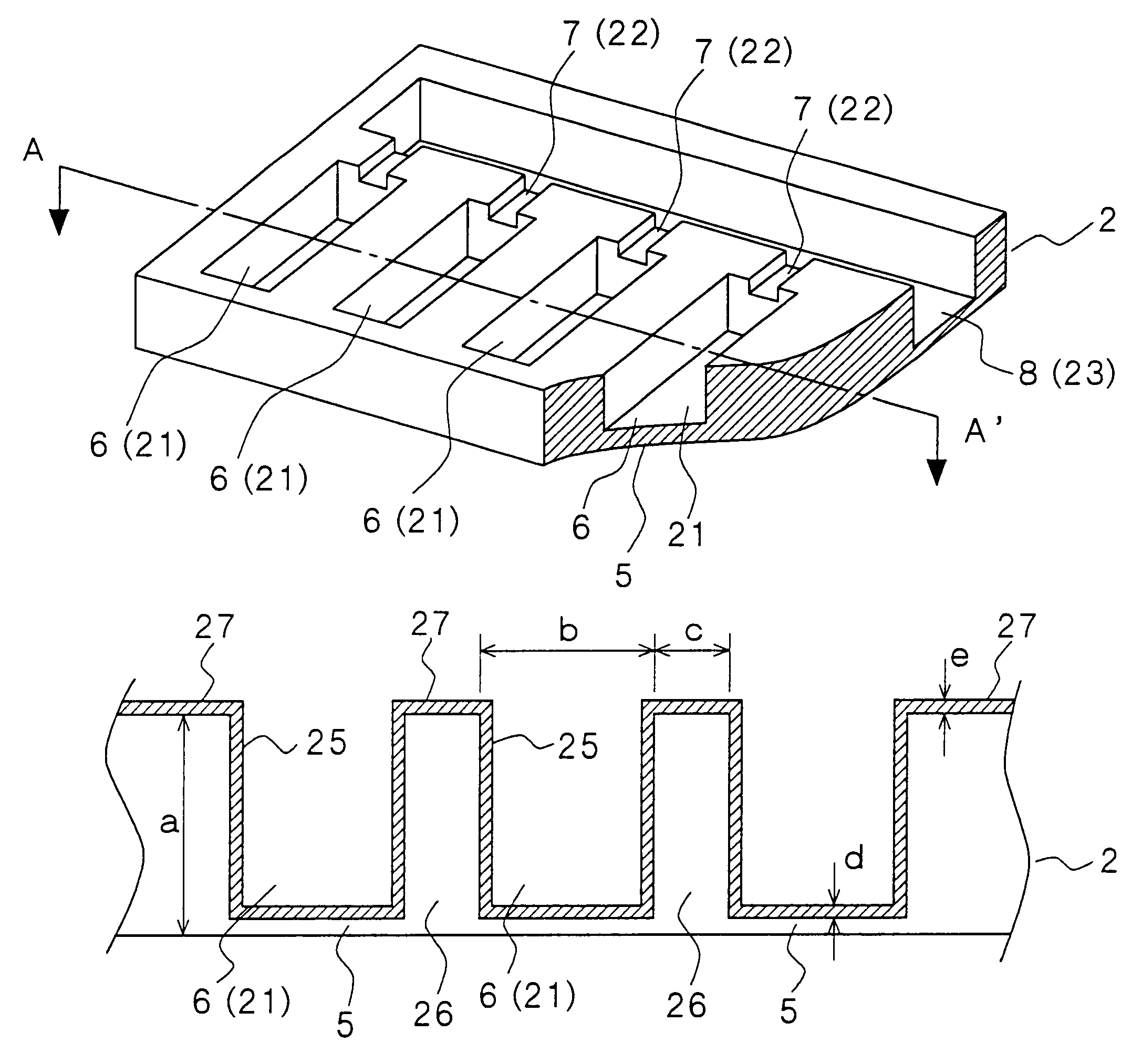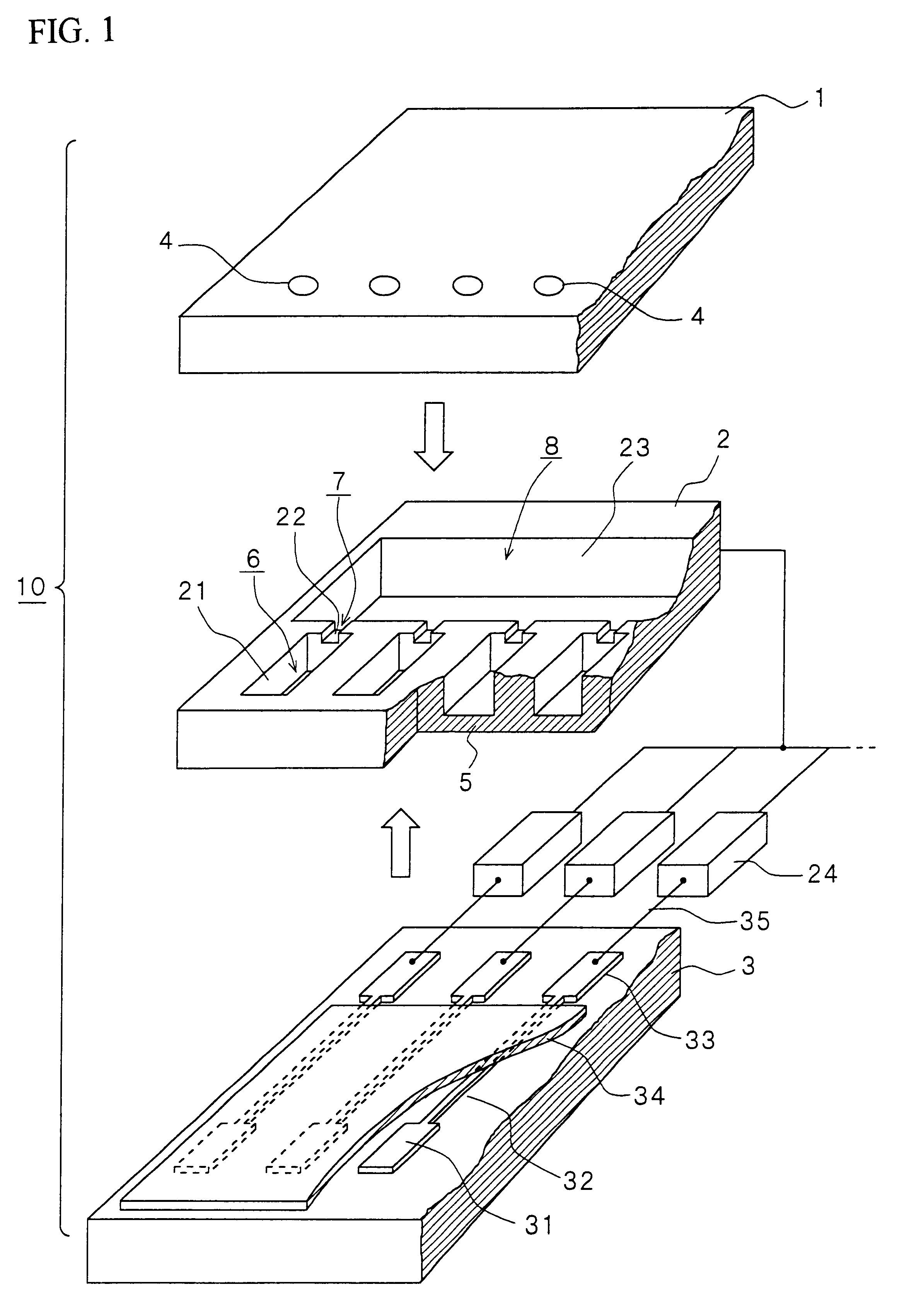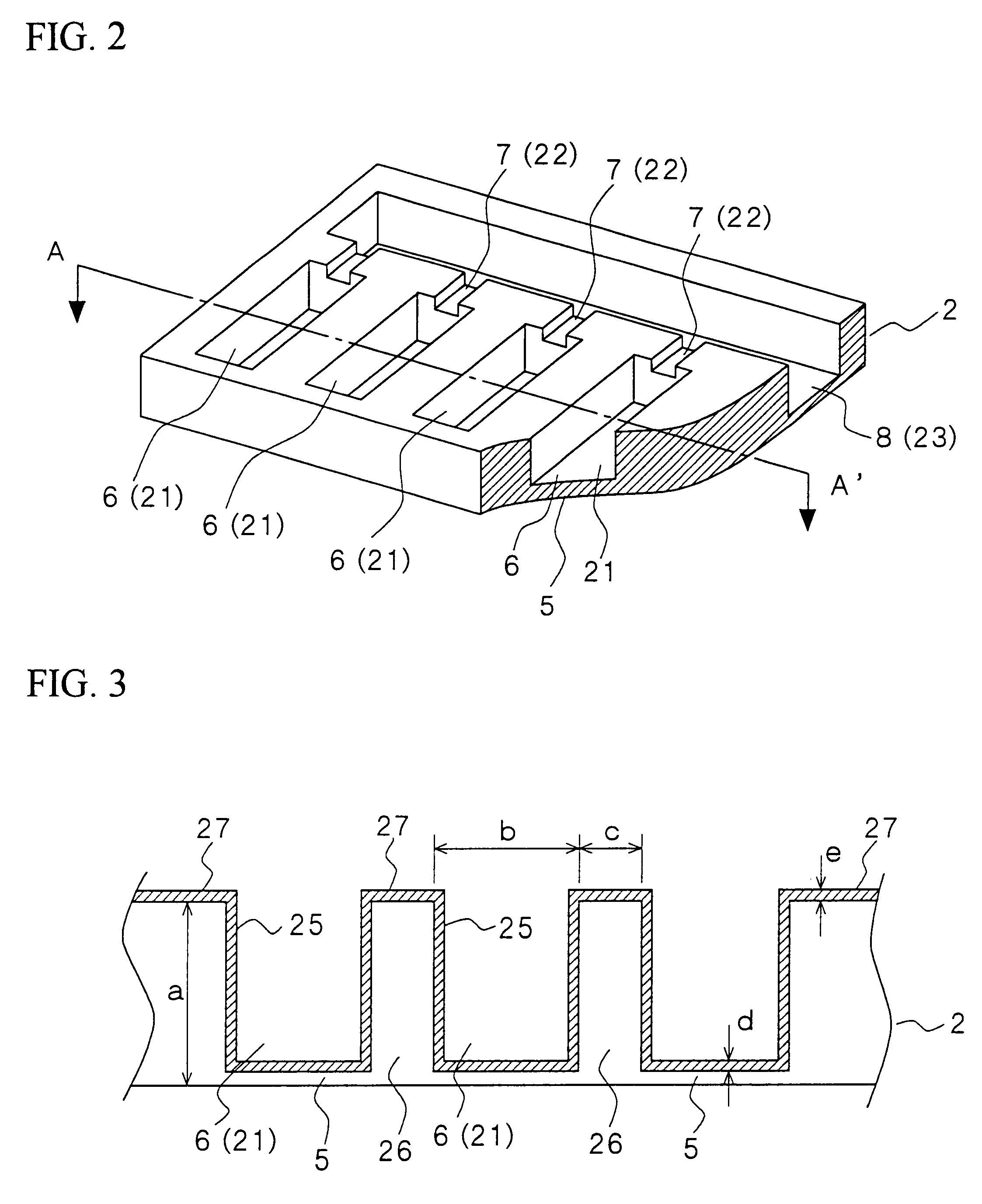Printing head and ink jet recording apparatus using the same
a recording apparatus and printing head technology, applied in printing, washing apparatus, textiles and paper, etc., can solve the problems of reducing printing quality, sacrificing work accuracy, and lowering the density of the nozzl
- Summary
- Abstract
- Description
- Claims
- Application Information
AI Technical Summary
Benefits of technology
Problems solved by technology
Method used
Image
Examples
embodiment 1
A driving method of an electrostatic system is adopted in an ink jet head 10 according to this embodiment. The ink jet head has a lamination structure in which three substrates 1, 2 and 3 having a structure which will be described in detail later are laminated one on another and bonded with each other, as shown in FIGS. 1 and 2. The upper substrate 1 made of, for example, silicon, glass or plastic is provided with a plurality of nozzle holes 4 (the pitch is about 70 .mu.m, and the diameter is about 25 .mu.m) so as to form a nozzle plate. The intermediate substrate 2 is constituted by, for example, a silicon single-crystal substrate. The intermediate substrate 2 has recess portions 21 communicating with the nozzle holes 4 and constituting pressure chambers 6 with their bottom walls acting as diaphragms 5; narrow grooves 22 provided at the rear of the recess portions 21 so as to constitute orifices 7 acting as ink inlets; and a recess portion 23 constituting a common reservoir 8 for f...
embodiment 2
In this embodiment, titanium nitride (hereinafter referred to as "TiN") is laminated all over the surface of an ink flow path (recess portions 21 to 23 constituting pressure chambers 6, orifices 7 and a reservoir 8) of an intermediate substrate 2 having the same shape as that in Embodiment 1, by any one of a sputtering method, a vacuum deposition method, an ion plating method, and a CVD method so as to form an ink-resistant thin film. The thin film has the same sectional shape as that in the above-mentioned Embodiment 1, as shown in FIG. 3.
Although TiN is laminated so that the film thickness thereof is 1,000 .ANG. on the surface of the diaphragm 5 (the size d in FIG. 3), the TiN film thickness on each surface 27 (the size e in FIG. 3) at that time varies in accordance with the laminating method used therefor, as shown in the following Table 2.
embodiment 3
In this embodiment, titanium oxide (hereinafter referred to as "TiO.sub.2 ") is laminated all over the surface of an ink flow path (recess portions 21 to 23 constituting pressure chambers 6, orifices 7 and a reservoir 8) of an intermediate substrate 2 having the same shape as that in Embodiment 1, by any of sputtering, vacuum deposition, ion plating, and CVD, so as to form an ink-resistant thin film. The thin film has a sectional shape as shown in FIG. 3, in the same manner as that in the above-mentioned Embodiment 1.
Although TiO.sub.2 is laminated so that the film thickness thereof is 1,000 .ANG. on the surface of the diaphragm 5 (the size d in FIG. 3), the TiO.sub.2 film thickness on the surfaces 27 (the size e in: FIG. 3) at that time varies in accordance with a laminating method used therefor, as shown in the following Table 3.
PUM
 Login to View More
Login to View More Abstract
Description
Claims
Application Information
 Login to View More
Login to View More - R&D
- Intellectual Property
- Life Sciences
- Materials
- Tech Scout
- Unparalleled Data Quality
- Higher Quality Content
- 60% Fewer Hallucinations
Browse by: Latest US Patents, China's latest patents, Technical Efficacy Thesaurus, Application Domain, Technology Topic, Popular Technical Reports.
© 2025 PatSnap. All rights reserved.Legal|Privacy policy|Modern Slavery Act Transparency Statement|Sitemap|About US| Contact US: help@patsnap.com



